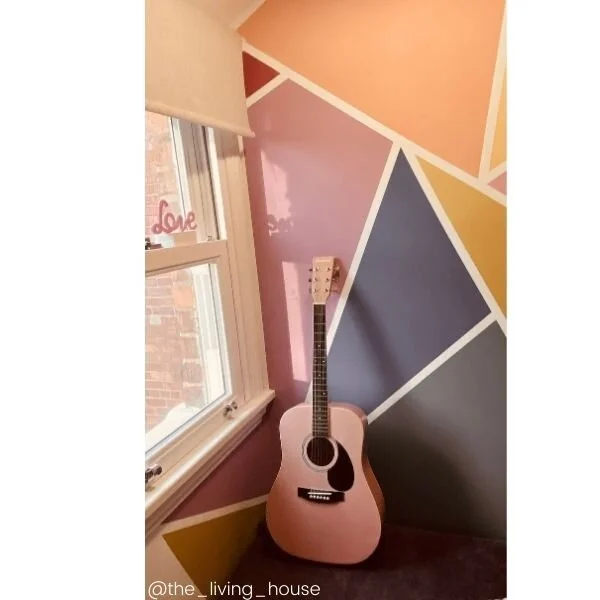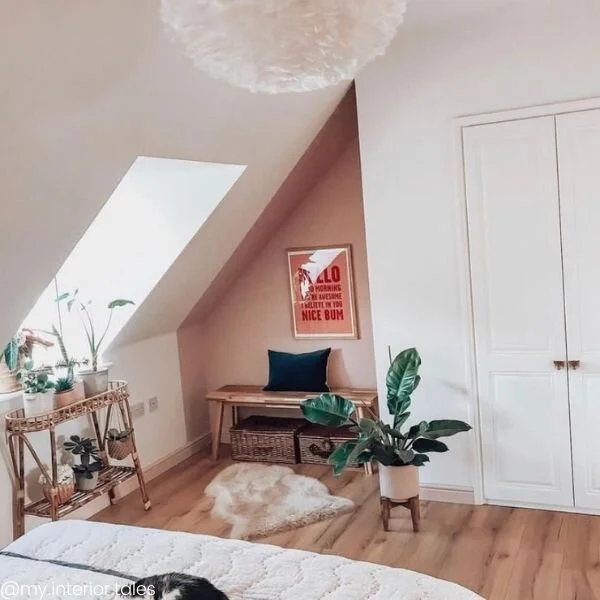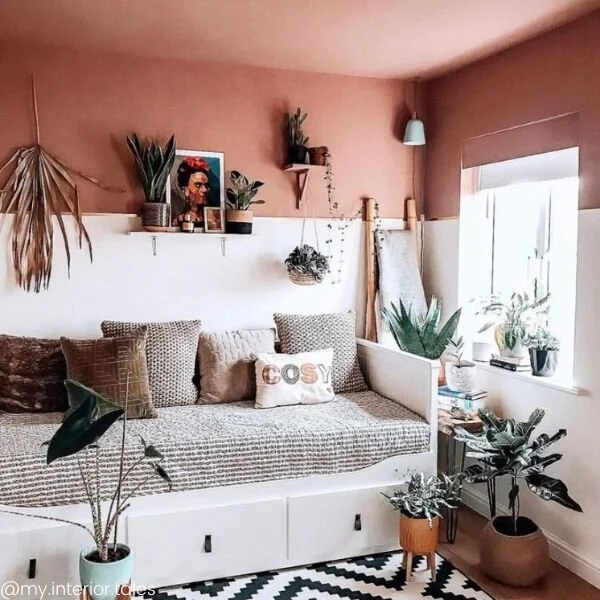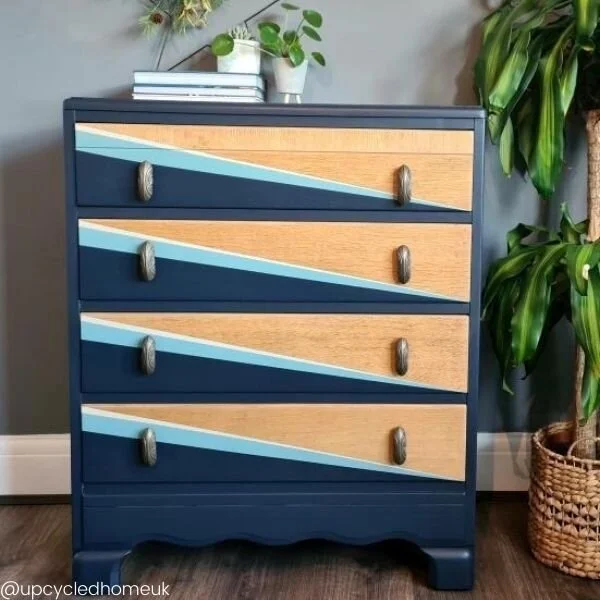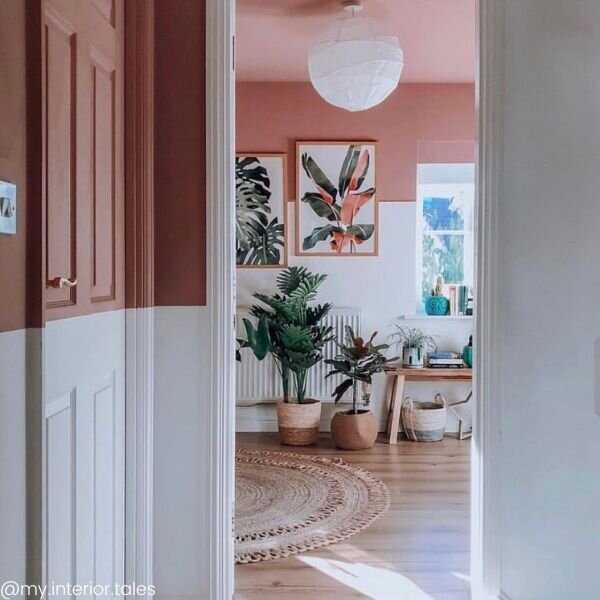How To Use Colour Blocking In Your Home
Written by Catherine Seagrave
Using paint in an interesting way is a quick and effective way to transform your home on a budget.
This week, as my thoughts turn increasingly to Christmas and the questions of will we/won’t we be able to celebrate and how and with whom, my daughter announces that she wants a complete bedroom redesign. And as is the way with 12 year olds, she wants it now, right now!
To be fair to her, her room was last decorated when she was 3. It is very overdue for an update. The problem is (well there are quite a few!) her room is tiny, very over stuffed with precious ‘can’t ever be thrown away’ things, completely untidy - and money is in extremely short supply right now.
So I’ve had to get creative with ways I can update her room, creating a calmer space for her that is still playful and interesting, and that will hopefully last for another 9+ years, on a very tight budget. Easy!!
And the idea I have come up with is colour blocking.
Colour blocking is a huge trend right now, and for good reason. It is one of the quickest and easiest ways to add heaps of personality to your room - it doesn’t need to cost a lot, and you can definitely have a go at it yourself. And best of all, it works in both traditional and contemporary homes, and for rooms with original features and those without.
But what exactly is colour blocking and how do I use it?
In essence it’s as simple as using 2 or 3 different colours together in a room to create a bold statement, although how bold can be determined by your colour choices. Painting different parts of the wall, floor, or ceiling in different colour combinations and shapes creates an energy, interest and a focal point.
It really comes down to 3 different decisions you need to make; what to paint, what colours to use and what shapes to create.
1. What to paint
This depends on how bold you are feeling. A good starting point is to limit it to one detail in the room and create a feature, for example, adding a bold contrasting colour to the recess of the window provides an unexpected pop of colour. Painting the door or the radiator is another easy way to add interest, adding colour in unusual spaces and creating artwork out of common features in the room.
If you are feeling bolder, painting the ceiling and continuing the colour down the top 20cm of the wall can be a great way to highlight any architectural details. Alternatively painting the floor and part of the bottom of the wall in a darker shade creates a strong statement and can anchor the bottom of the room, making the overall space feel taller and more airy. If you choose to do this you need to paint everything in this zone as a seamless band - the skirtings, architraves, door.
Or you could use colour blocking for a furniture revamp. Painting just part of a wardrobe in a strong colour creates drama and a bit of fun in a kids room, and could be a quick one day upcycling project with big results.
2. What colours to use
The great thing about colour blocking is that it can be so personal to you. It gives you the chance to embrace the colour you love and add energy or harmony to the room. There’s no doubt it can add serious impact, but the boldness can be turned up or down depending on the colours you introduce. And keeping the majority of the walls white, you can change it without spending a fortune.
At its most bold, you can pair clashing colours together to enliven the wall, with deep vibrant shades. Sometimes there’s something about mixing bold jarring colours that just work to create a unique, lively feel. Or you can go for more classic colour combinations like pink and green, pairing them together to link other colours in the room and create harmony. Pastel colours blend beautifully together, but still add interest and a cheeriness - and bags of style.
Or you could go for a much more subtle look, using tones of the same colour to create a soothing atmosphere. Little Greene paint would be great for this using their paint scales; the same shade but in different intensities from light to dark.
Struggling to decide on paint colours? We can help, get in touch today!
3. What shapes to create
The shapes you create are perhaps the most important aspect of colour blocking and depend on what you are trying to achieve. If you are lacking features in your room, then colour can help create them and can be punchy and daring. You can run a rectangular colour block up the wall to create focus in the same way a fireplace would. It can be used in the place of an oversized piece of art or tall piece of furniture to add colour, interest and impact and can draw your eye to that area. You can use a horizontal rectangle around a shelf to highlight a certain area and make it a stronger feature.
You can use shapes to zone the area and define certain activities, creating a cosy snug or an area around your desk. Strong geometric shapes have a huge impact when used together. Triangular shapes, achieved with lots of low tack masking tape, can draw your eye up or down, or away from an area you don’t want to focus on.
If you are feeling really steady handed, you can opt for curves and circles, echoing the trend for all things circular right now. In a bedroom you can create the illusion of a headboard with a pop of colour in a large semi circular arch behind the bed. And it’s something you could refresh for less money than you’d spend on a new duvet cover.
To break the geometric lines you have created, it looks great to place artwork or mirrors across the line, to soften the look and draw your sight line to your pictures.
Once you start looking at your home in this way, there really is no end to the possibilities you can play around with. And it is not as time intensive or hard as you think. It is, after all, only paint. My home suddenly looks like a very blank canvas!
So back to my daughter’s bedroom. I’m going to give colour blocking a go around her cabin bed. I want to give the illusion of a larger space and to create an area for her shelves, pictures and books to be, grouping them together to create some harmony in a very busy space. I’ll let you know how I get on, and whether my most difficult customer deems it a success!!
If you need help with an area in your home, including colour schemes and tips on how to mix colours together, our Midi package would be perfect for you.

